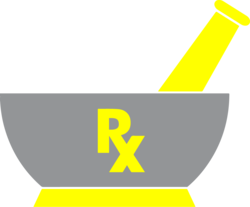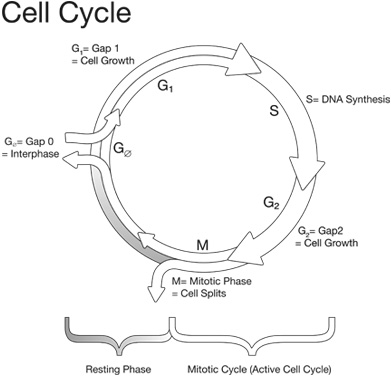Types of Chemotherapy Drugs
Callaix takes a methodical approach to organize 200+ medicines on this site.
Common ways of classing different drugs include
- By chemical structure
- By therapeutic use – the disease or condition they are intended to address.
- By mechanism of action or mode of action – how the drug interacts with the body’s biology and physiology
- By origin – e.g. plants or manufacture process – monoclonal antibodies
The Callaix system is a hybrid of origin and mechanism of action. We group antibodies (and conjugates) together (although some work by inhibiting kinases) and we group small molecule kinase inhibitors together. Many drugs could fall into more than one class. Some metabolic drugs inhibit more than one type of kinase. There is no perfect system.
Cytotoxic
Alkylating Agents (21 currently approved drugs)
Vinca Alkaloids (4 currently approved drugs) and 4 other mitotic inhibitors
Anthracyclines (5 currently approved drugs) and other antitumor antibiotics
Antimetabolites (19 currently approved drugs, of which 4 are antifolates)
Topoisomerase Inhibitors (8 currently approved drugs)
Targeted therapies:
Small molecule Kinase Inhibitors (55 currently approved drugs) and 10 other small molecule signal induction inhibitors and enzyme inhibitors.
Monoclonal antibodies (unconjugated 31 currently approved drugs) and conjugates (14 currently approved drugs)
HDAC Inhibitors (4 currently approved drugs)
PARP Inhibitors (4 currently approved drugs)
mTor Inhibitors (2 currently approved drugs)
IDH Inhibitors (2 currently approved drugs)
Selective Inhibitors of Nuclear Export (1 currently approved drug)
Hormone therapies
Aromatase Inhibitors (4 currently approved drugs)
Retinoids (4 currently approved drugs)
Hormone Suppressants and modulators (19 currently approved drug)
Drug therapy against cancer works by two general methods (1) inducing apoptosis and (2) stopping tumor growth. The cytotoxic medicines induce apoptosis, while targeted therapies and hormone therapies stop or slow the progression of the cancer. Roughly, we can classify the medicines this way:
Cytotoxic: alkylating agents, anthracyclines (and other antibiotics), vinca alkaloids, topoisomerase inhibitors. Hormone therapies: retinoids, aromatase inhibitors, hormone suppressants. Targeted therapies: monoclonal antibodies and signal transduction inhibitors (kinase inhibitors, HDAC inhibitors, PARP inhibitors, etc.)
Some chemotherapy agents work in specific parts of the cell’s reproductive cycle. You see agents that are described as inhibiting the S-Phase or the M-Phase. Others are non-phase specific.
Other drugs are not explicitly cytotoxic, but instead work by disrupting the ability of the tumor to stay intact. This is the method of action that most targeted therapies use.
Is immunotherapy really chemotherapy?
Also called biologic therapy, immunotherapy is often classified as a different type of cancer treatment from chemotherapy. The active agents are different from old-style chemo, but the process involves giving chemicals (sometimes very large and complex molecules) to patients in formats like intravenous injection, so on this website we include immunotherapy as a type of chemotherapy.
Orphan Drugs
Through tax and patent policies, the US government encourages the development of orphan drugs, so private industry doesn’t spend its efforts only on trying to come up with blockbuster drugs and variations of existing medicines. The official definition of orphan drug is pretty loose, too, as even medicines for conditions that afflict a large section of the population qualify.
Administration
 Each patient gets a drug or group of drugs administered by oral or intravenous injection (or other less commonly used routes such as intrathecal injection) at a precise dose, based on patient weight, and given over a finite and defined time period. Adjuvant therapy is chemotherapy given to high risk patients after other definitive local therapy (radiation or surgery) has removed the tumor. It is established therapy for breast, colorectal, osteosarcoma, Wilm’s tumor, and some stages of gastric, non-small lung cell cancers and some melanomas. In contrast, neoadjuvant therapy is given before other localized therapy (such as surgery or radiation) is used. It may be beneficial in treatment of advanced but limited breast tumors, laryngeal, esophageal, bladder, anal cancers and some sarcomas.
Each patient gets a drug or group of drugs administered by oral or intravenous injection (or other less commonly used routes such as intrathecal injection) at a precise dose, based on patient weight, and given over a finite and defined time period. Adjuvant therapy is chemotherapy given to high risk patients after other definitive local therapy (radiation or surgery) has removed the tumor. It is established therapy for breast, colorectal, osteosarcoma, Wilm’s tumor, and some stages of gastric, non-small lung cell cancers and some melanomas. In contrast, neoadjuvant therapy is given before other localized therapy (such as surgery or radiation) is used. It may be beneficial in treatment of advanced but limited breast tumors, laryngeal, esophageal, bladder, anal cancers and some sarcomas.
Ways to administer chemotherapy
